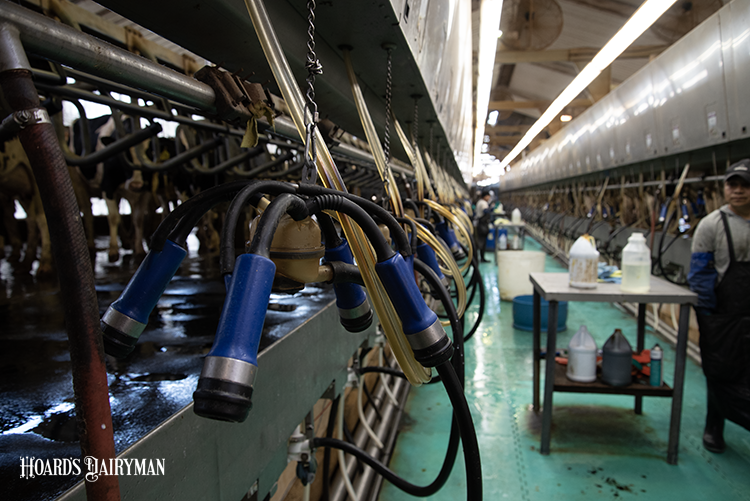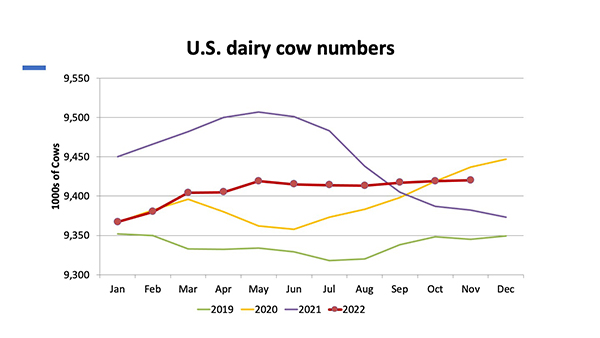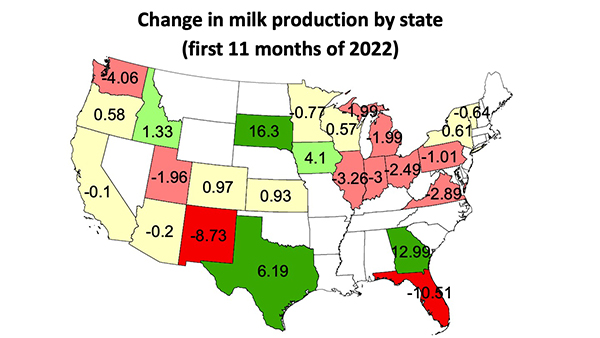
When it comes to the nation’s milk output, the number of dairy cows and milk production per cow are two key factors. University of Wisconsin’s Mark Stephenson reviewed where these numbers went in 2022 during the recent Wisconsin Agricultural Outlook Forum held in Madison, Wis.
“Dairy cow numbers really speak to our capacity to produce milk in the short term,” said the recently retired director of dairy policy analysis. He explained that in early 2021, cow numbers grew in response to reasonably strong milk prices. Halfway through the year, that trend reversed, and cow numbers declined.

In early 2022, cow numbers rose once again, but then they plateaued through the rest of the year. Stephenson predicts that modest growth in numbers could be possible, but he believes it is more likely that we will see a small decline in U.S. dairy cow numbers in 2023.
The other part of milk production is milk yield per cow, and Stephenson said it is typical for us to have growth year over year in this area. Last year bucked that trend early on, as the first half of 2022 saw almost no growth in milk per cow. There was some response in the latter half of the year, however, which Stephenson said brought us close to the normal growth pattern.

“Putting it all together, with stable cow numbers and a little growth in milk per cow, we were actually up a little bit in production for 2022,” Stephenson noted. That follows several months of negative milk production growth for the nation in late 2021 and early 2022.
Substantial milk producing states in the mid-east, from Illinois to Pennsylvania, saw production losses in 2021, Stephenson said. States with significant milk production declines were Florida and New Mexico.

The big gainers were Texas, Georgia, and South Dakota, where production in 2022 was up 6.19%, 12.99%, and 16.3%, respectively. “There were some states that gained and some that lost, but the ups slightly carried the day,” Stephenson said of overall milk production.
Weather factors affected production in parts of the country. “Drought is still an issue and is likely going to be an issue in the years ahead,” said Stephenson. “It is putting downward pressure on milk production in western regions of the country.”
As for milk components, those continue to rise. It is normal for herds to see seasonal growth in butterfat and protein production, but since 2010, component levels have really moved upward. Last year, milk in the U.S. averaged more than 4% butterfat.
“That is astonishing,” Stephenson said. “Components matter to manufacturing, and that is where we have seen growth in our dairy industry.” While fluid milk consumption is down, overall per capita dairy consumption is climbing, reaching more than 660 pounds of milk equivalents per person in 2021.
“It tells you that farmers are responding to the price signals they are getting,” Stephenson continued. “They have their hands on the lever of production. It is some genetics and some management, but we are producing more components.”








